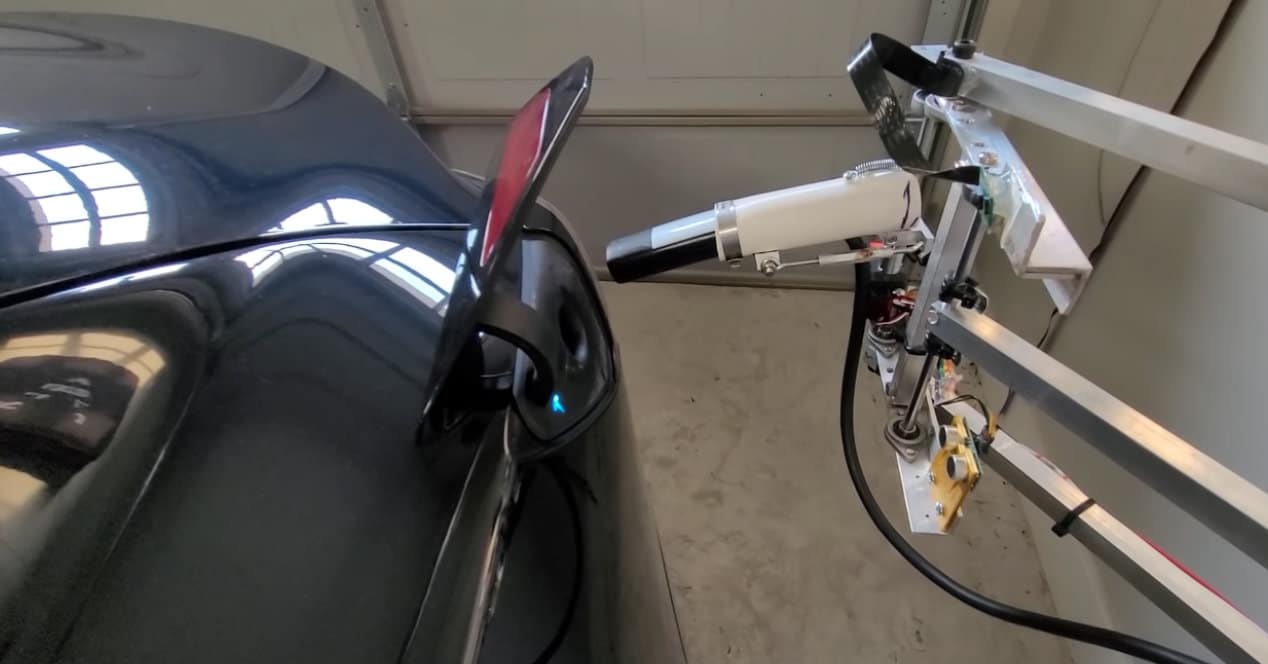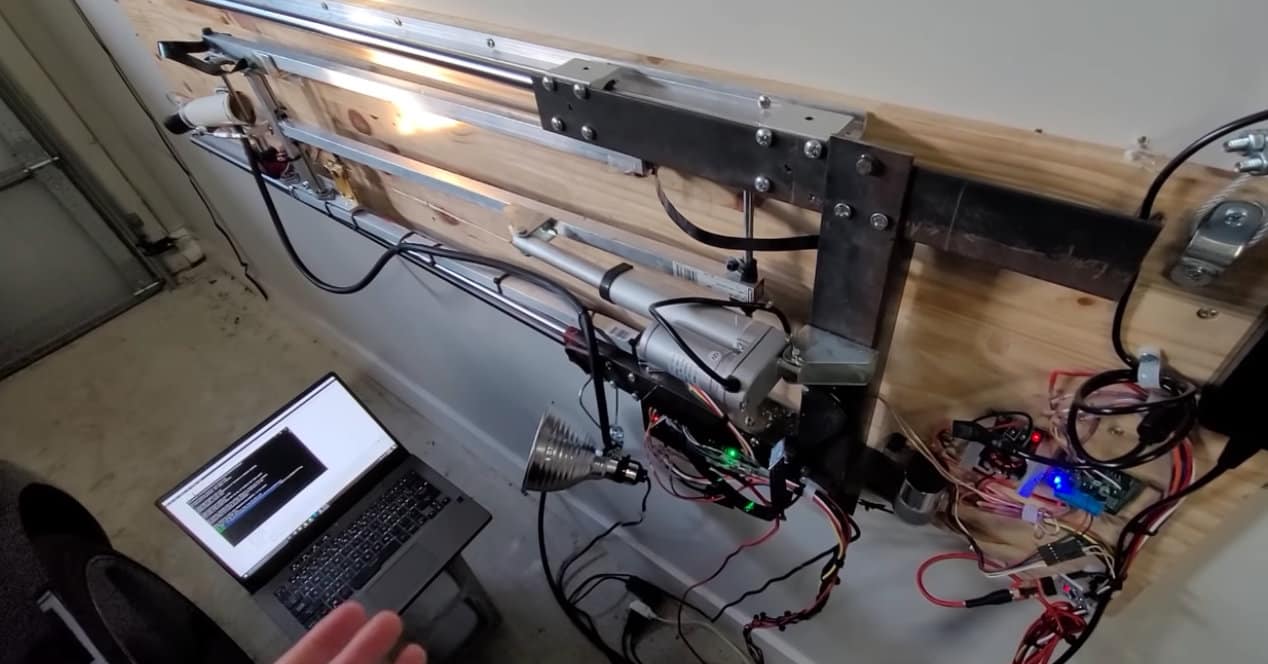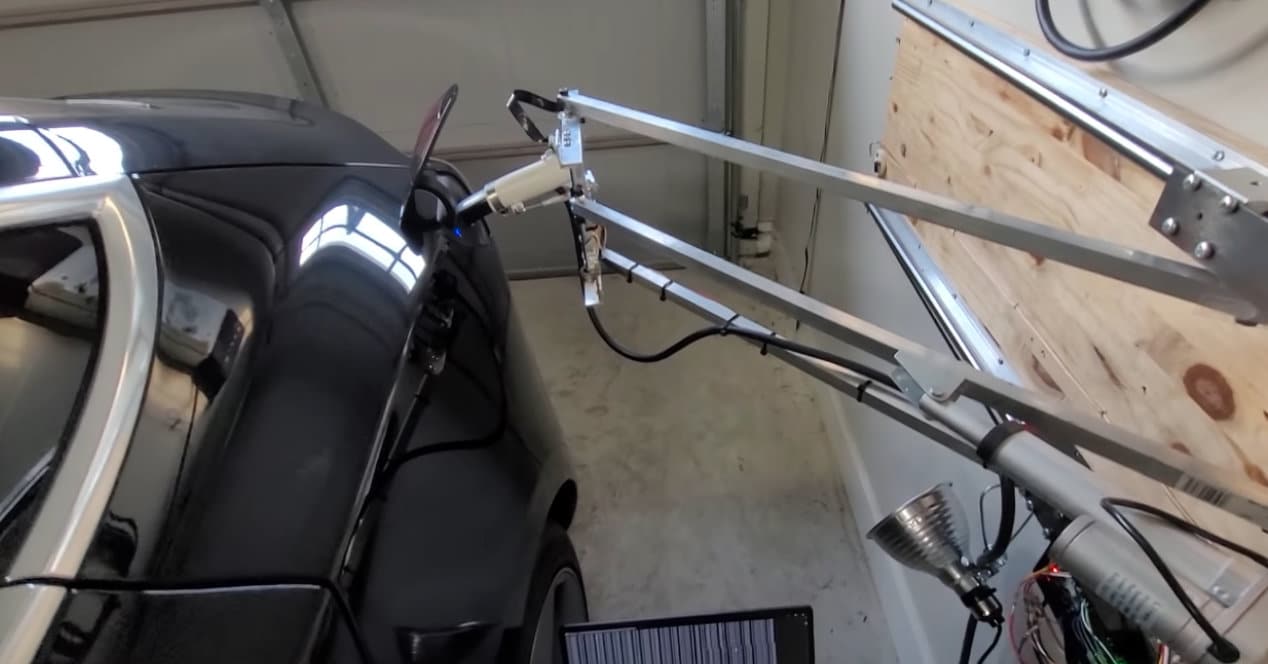
A Raspberry Pi to run emulators, create your own multimedia center, the occasional project related to security cameras,... all this is great, but would you have imagined at some point creating a autonomous charging system for electric cars Tesla, No? Well, there is someone who did and made it a reality.
Homemade solution to Elon Musk's robotic charging arm

Electric cars are becoming more and more popular and Tesla cars in particular. These have increased the rate of production and, together with other factors, have led many users to bet on them. However, not all Tesla owners can say they have a charging system as flashy as this one. Or yes, but that would be Elon Musk and because he is who we all know he is.
In the video that you see below these lines, a robotic system created by a user appears that imitates in a certain way the one that we could see some time ago by Tesla itself. It was Elon Musk who showed a autonomous arm capable of charging one of their vehicles without the owner having to do anything. A system that seemed spawned by Ultron himself.
Well, that idea was the one that this user transferred in his own way and with the limitations of the means he had, but which is still very striking and surely more than one Tesla owner would want to have. Why this robotic arm powered by a Raspberry Pi 4, a few motors and actuators plus a series of extra parts is capable of carrying out the process of connecting the charging hose without the need for the user.
Thanks to a camera and artificial intelligence, the position should be calculated based on the vehicle's own situation once it enters the garage. So it will not be as spectacular as the other arm, but it will be autonomous enough to improve the process that all electric car owners have to carry out in order to have the battery ready when they need to take the car to go somewhere again. place.
A system only for true handymen

As you may have also seen in the video, the person in charge of this striking project based, how could it be otherwise, on a Raspberry Pi 4 has advanced knowledge in all this. Otherwise it would not have been possible to find a solution that seems simple, but it is not.
What's more, if you pay attention to it you will be able to see how there is not just one Raspberry Pi 4 but other small components such as sproximity sensors, a lamp that illuminates the vehicle's charging connection, control of the position of the arm by means of motorized guides, etc., etc.
I mean, it's a lot more complex than it might seem at the beginning because an AI is even used that helps move the loading arm to the appropriate position for its correct fit. And it is also clear that this is not a perfect solution, it can be improved a lot. Especially when it comes to speed. Although if there is no intention of taking the car until after a while or the next day it is not a problem either.
However, the most interesting thing is that this type of project still encourages a manufacturer to make some type of similar accessory. And that is not easy, especially if you want it to be something universal. Not to mention that the owners themselves should trust. Because more than one would have a micro heart attack if they arrive and see the arm hitting the bodywork because it can't find where to connect the charging hose.